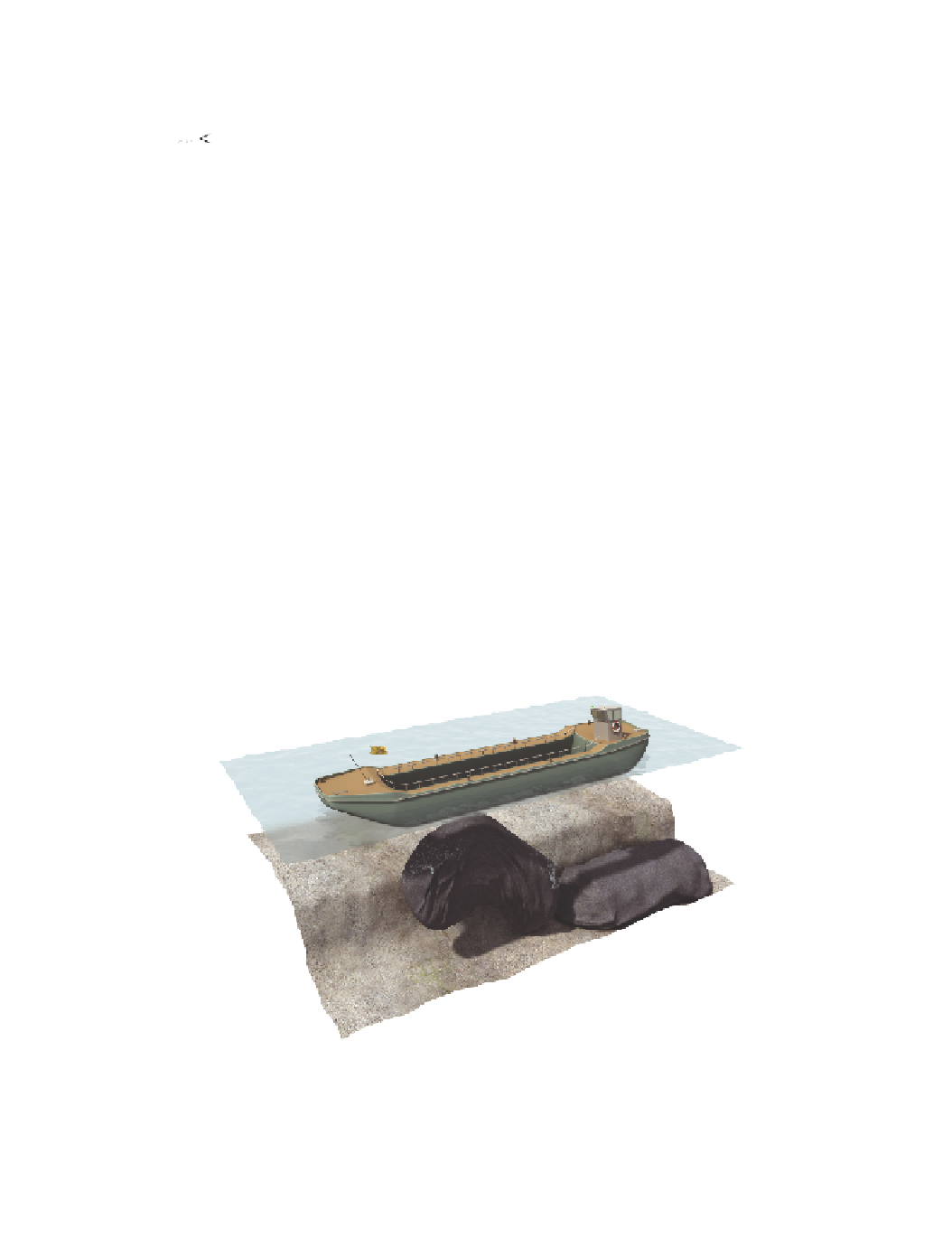Geoscience Reference
In-Depth Information
foundation of the bottom consists of soft clay, a significant part of the fall energy will
also be dissipated by the deformation of the bottom foundation. Such a situation is
not accounted for here.
No failure occurs if:
(6.4)
EEE
fall
<+
E
fill
geo
fill
where:
fall
=
fall energy per unit of length [J/m];
fill
=
maximum energy to be dissipated by the fill material per unit of length
[J/m];
geo
=
maximum energy to be dissipated by the geotextile per unit of length [J/m].
All the components are expressed here in terms of energy per unit of length,
which presents no problem if the geotextile container actually impacts flat on the
bottom. However, if a container hits the bottom with its front or back end first, as is
shown in figure 6.6, a total energy approach may be warranted.
In the case of a non-parallel drop, most of the fall energy of the entire container
has to be dissipated by the geotextile and the sand in only a part of the container. This
can increase the energy to be dissipated on a per unit of length basis significantly.
Therefore, the greatest possible care should be taken to ensure the container falls as
flat as possible on the bottom.
Energy dissipation by the geotextile
The amount of energy that can be dissipated by the geotextile is a function of the
maximum strain and tensile strength of the geotextile [22] [17].
Figure 6.6
Simulated fall of geotextile container from split barge. Note that during the fall the
container height is greater than the width. This depiction is only of qualitative value since
the behaviour of the geotextile container here is simplified.




